Informação acerca de Cookies Termos de uso e Privacidade
The behavior and conservation of the roofs with ceramic tiles through time are directly related to how materials are applied. For a complete information on the application of ceramic tiles and accessories in a roof, the good practices described in the Manual of Application of Ceramic Tiles, prepared by APICER, CTCV and Instituto de Construção, should be considered and followed.
The materials forming the slat (2 to 4 cm high) must ensure correct positioning and support of the tiles.
This distance must be checked on site after the Receiving Inspection, corresponding to the arithmetic average between the distance from the wide position and the narrow position of the tiles.
When the slat is built on a solid surface (reinforced concrete, insulation board ...) it must be interrupted in cross-sections to allow ventilation of the roof.
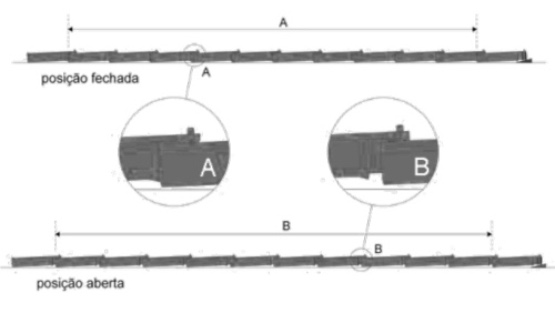
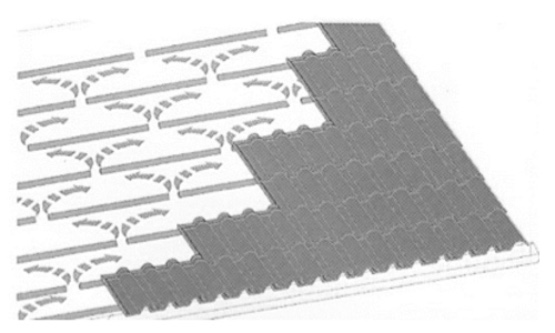
As an elementary rule to obtain a correct alignment of each row of roof tiles, is to start placing them parallel to the eaves, starting at the lower right corner of the slope.
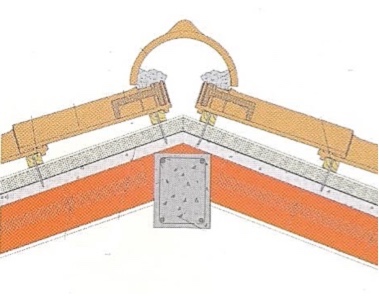
In the construction of the ridgeline, ridge tiles should be placed in the opposite direction of the prevailing winds. The used mortar for settling the ceramic pieces should be the minimum required. A lime and cement mortar with 150 kg of cement and 175 to 225 kg of lime per m3 of dry sand is the recommended proportion.
It is crucial to use the under ridge pieces in the construction of the ridgeline as to avoid the excessive use of mortar, which annuls the ventilation of the roof, resulting in unsolvable problems of peeling and/or cracking of the ceramic materials with the consequent water infiltrations.
The underside of the tiles must be sufficiently ventilated to ensure the roof preservation over time.
Ventilation should ensure air enters the lower part of the roof and exits through the ridgeline.
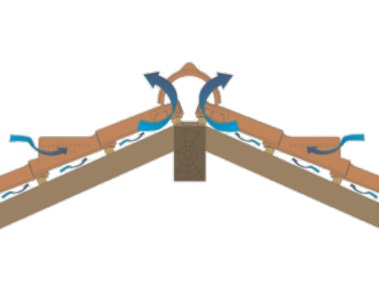
The maintenance of ceramic tiles' roofs is fundamental for their effectiveness as a protection element.
Thus, minimum cautions must be taken to ensure the durability of the pieces which are directly exposed to the weather conditions, such as periodic cleaning of the roof to avoid that any dirt jeopardizes the good performance of the ceramic pieces and keep all rainwater evacuation systems functioning properly ant time-to-time check for the existence of displaced or broken parts on the roof.
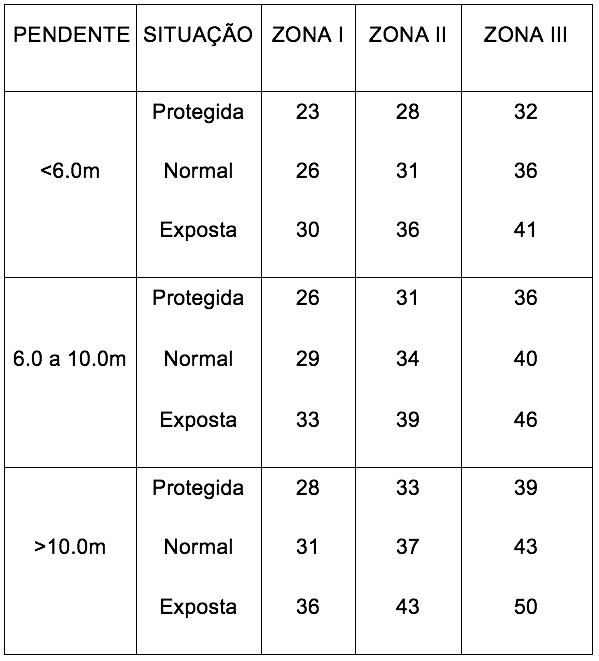 +++++
+++++Southern interior of Portugal (Alentejo and Algarve)
Southern littoral area of Portugal with altitude lower than 600 meters excluding ZONE I and the first 20 Km of the coastal strip.
Northern inland of Portugal with altitudes above 600 meters and the coastal strip in an extension of 20 km.
An area which is totally surrounded by elevations of land and protected from all directions of incidence of the winds.
Practically flat area, with slight terrain undulations.
Coastal Area up to a distance of 5 km from the sea, perched on cliffs, in islands or narrow peninsulas, estuaries or dug-in bays also arrow valleys (channeling winds), high and isolated mountains and some uplands.